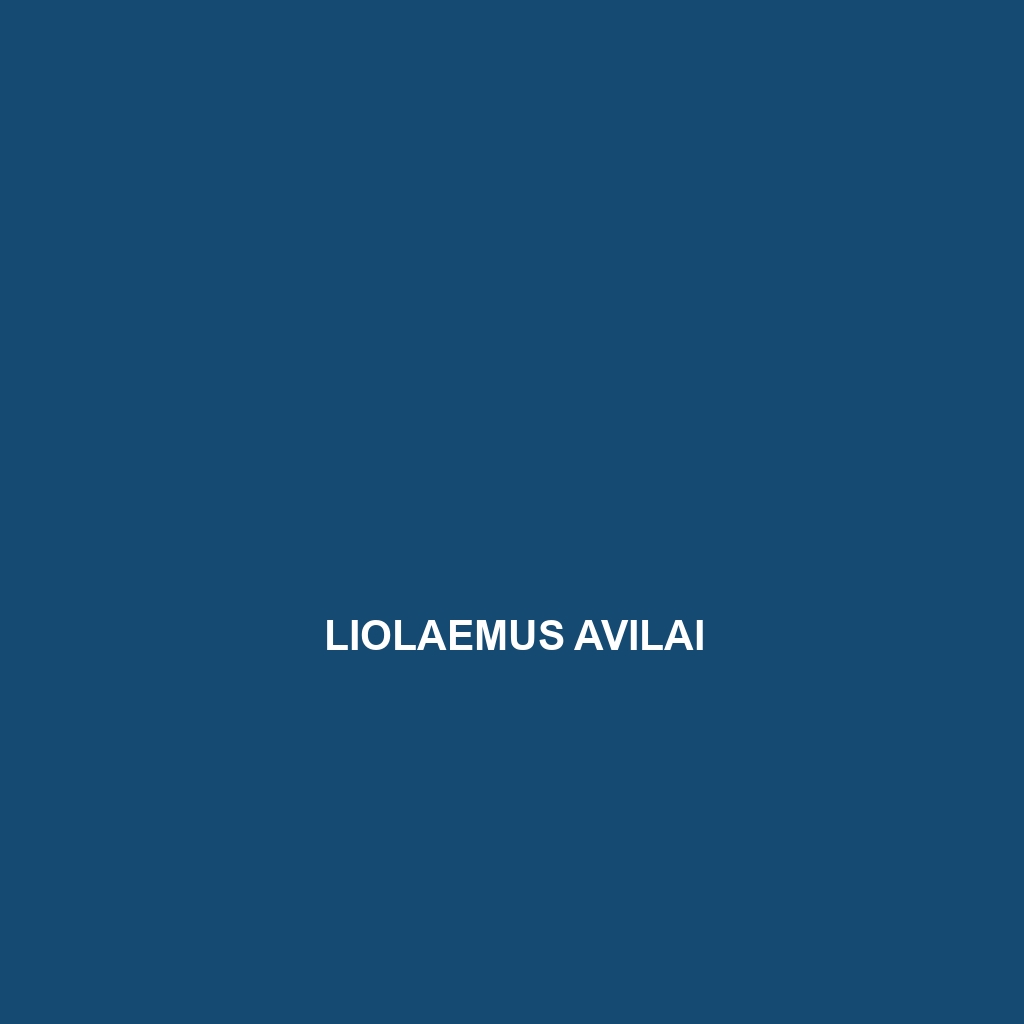Common Name
Liolaemus avilai
Scientific Name
Liolaemus avilai
Habitat
Liolaemus avilai is primarily found in the rugged terrains of the southern Andes, particularly in the provinces of Neuquén and Río Negro in Argentina. This lizard thrives in mountainous environments characterized by rocky outcrops and shrubs, specifically in areas with a temperate climate. The species prefers regions where rainfall can range from moderate to high, particularly in foothill areas that transition into more arid zones. In their habitat, Liolaemus avilai shows a preference for open spaces where it can bask in sunlight. Rainforests and temperate forests in this area serve as ideal environments for this species, providing both shelter and abundant food sources.
Physical Characteristics
Physically, Liolaemus avilai is a medium-sized lizard, measuring approximately 20-25 cm in length. Its body is robust and well-adapted for life in rocky environments, featuring long limbs and a flattened body shape which assist in maneuverability among boulders and crevices. The color palette of Liolaemus avilai varies, typically exhibiting earth tones of brown and gray, which provide excellent camouflage against rocky substrates. Some individuals may display vivid patterns of yellow or orange spots along their dorsal side, a characteristic that enhances their attractiveness during mating displays. The lizard’s unique scale structure adds an iridescent quality, further distinguishing it from other species in the Liolaemus genus.
Behavior
The behavior of Liolaemus avilai is unique and adaptive to its environment. These lizards are primarily diurnal, becoming active during the daytime, which allows them to bask in the sun and forage for food. Social interactions among individuals tend to be more pronounced during the mating season, where males may engage in territorial displays and visual communication to attract females. Notably, Liolaemus avilai exhibits a fascinating courting ritual, which includes head-bobbing and push-ups, escalating in intensity when competing with other males. Although these lizards are not migratory, they will exhibit some movement within their territory to adjust to seasonal changes in temperature and food availability.
Diet
Liolaemus avilai is predominantly an insectivore, feeding primarily on a diet of various insects, including grasshoppers, beetles, and caterpillars. This species will also opportunistically consume small invertebrates and occasionally plant matter, positioning it as a minor omnivore. Its foraging style consists of active hunting in the early morning and late afternoon when insect activity peaks. The lizard’s keen eyesight plays a crucial role in locating its prey, allowing it to react swiftly to capture movements. The dietary habits of Liolaemus avilai reflect the lizard’s adaptation to the abundant insect population in its habitat.
Reproduction
The reproductive cycle of Liolaemus avilai occurs once a year, with mating typically happening in the late spring when temperatures begin to rise. After mating, the female undergoes a gestation period lasting approximately 3-4 months before giving birth to a batch of 2-5 live young. Unlike many lizards that lay eggs, Liolaemus avilai is viviparous, giving birth to fully developed lizards that are capable of immediate independent survival. Once born, the young lizards quickly disperse to establish their own territories. Parental care is minimal; however, the mother may stay close to the neonates to reduce predation risks in the initial weeks of life.
Conservation Status
The conservation status of Liolaemus avilai is currently classified as vulnerable according to the International Union for Conservation of Nature (IUCN). Habitat destruction due to agricultural expansion and urban development poses significant threats to its populations. Additionally, climate change is impacting the delicate ecosystems where this lizard resides. Conservation efforts are underway, focusing on habitat preservation and restoration, as well as increased public awareness about the importance of biodiversity in these regions. Researchers and local organizations are also conducting studies to monitor the population dynamics and health of Liolaemus avilai.
Interesting Facts
Liolaemus avilai possesses some intriguing adaptations that make it a fascinating subject for study. One of these is its ability to change color slightly in response to environmental factors, aiding in camouflage. Moreover, these lizards have developed a remarkable tolerance to cooler temperatures, allowing them to remain active and forage during the colder months when other species may become dormant. Their unique social dynamics and territorial behaviors make them a captivating example of reptile life in the Andes.
Role in Ecosystem
Liolaemus avilai plays a crucial role in its ecosystem, serving as both predator and prey. As an insectivore, it helps control the populations of insects in its habitat, preventing overpopulation that could disrupt ecological balance. Additionally, they serve as a food source for various larger predators, contributing to the food web. Their foraging activities also aid in seed dispersal and plant growth, highlighting their importance in promoting biodiversity in the southern Andean ecosystems. As a relatively small lizard, they are considered an important part of their ecological community, providing insights into environmental health and species interactions.
